

Neurosurgical issues such as brain anomalies, spine deformities, or congenital heart disease may also be present, and thus these patients often need a complete tertiary workup. Any abnormal displacement of the tibia on the femur indicates anterior cruciate instability and represents a positive test. Anal fissures present with acute onset of pain during defecation and are often caused by hard stool. Pityriasis Rosea Pityriasis rosea is a benign, self-limited disorder that can occur at any age but is more common in adolescents and young adults. Contusions A contusion, or bruise, usually requires no treatment, and healing proceeds favorably in most instances. Finally, preinjury photos should always be obtained if possible for comparison, because facial asymmetries and dental problems are common. Melanotic Neuroectodermal Tumor of Infancy Melanotic neuroectodermal tumor of infancy is a benign yet aggressive tumor, developing during the first year of life and often found on the anterior maxilla in association with unerupted or erupted teeth. Tissue expansion can potentially solve the problems of tissue mismatch of grafts and the limited availability of local flaps. Internal hemorrhoids commonly present with either bleeding or a prolapsing mass with straining. In its most severe form, spondyloptosis, the L5 vertebral body may completely translate off the sacrum, and the patient characteristically exhibits a waddling gait, a transverse abdominal crease, flattened buttocks, and flexion deformities of the hips and knees, as well as foreshortening of the torso. A, An anteroposterior radiograph of the wrist shows a minor torus or buckle fracture of the radius. This teratoma has an external component and is easily visualized on physical examination. Intensely pruritic papulopustular lesions are seen over the foot and ankle of this infant. A chalazion is a chronic granulomatous inflammation of the meibomian glands within the tarsal plate (higher on the lid than a hordeolum). Lichen Sclerosus Lichen sclerosus is a chronic inflammatory dermatologic disorder believed to be of autoimmune origin that primarily involves the anogenital area in prepubertal girls. Third-order neuron lesions, postganglionic in reference to the superior cervical ganglion, are usually benign; however, extracranial or intracranial tumors of the nasopharynx or cavernous sinus may produce such lesions. These masses include dermoid cysts, pharyngeal duplications, hemangiomas, lymphatic or vascular malformations, and malignancies (neuroblastoma, rhabdomyosarcoma, teratomas). Like griseofulvin, they are effective against most ringworm organisms, but unlike griseofulvin, these medications are concentrated in skin, hair, and nails for weeks to months after they are discontinued. If untreated, patients with Addison disease progressively weaken and vascular collapse ensues. Evidence of intracaval and right atrial thrombus requires chemotherapy before surgical resection to treat the vascular invasion and minimize surgical morbidity. Initial appearance can be confused with a portwine stain initially, because it will have red plaque-like appearance but will quickly differentiate as it rises from a macule on the skin surface to a plaque. Abduction of an eye is checked by holding the head, occluding the contralateral eye and quickly encouraging fixation movements. With or without treatment, collapseconsolidation lesions can re-expand and resolve, clear with residual calcification of the primary complex and regional node (Ghon complex), or scar with progressive contraction of the involved pulmonary segment and bronchiectatic changes. The rash begins distally on the wrists, ankles, palms, and soles, usually appearing as an erythematous, blanching, discrete macular or maculopapular eruption. Asthma (formerly called reactive airway disease) or bronchial hyperresponsiveness is a common and probably underdiagnosed cause of cough in infancy. Ultrasonography has proved to be the best tool for this purpose before ossification of the posterior vertebral elements (at 3 months), because it not only can detect vertebral defects and spinal anomalies but also can be used to assess cord motion. Among sexually active adolescent girls, sexually transmitted pathogens are a common source of infection. Congenital Rubella Widespread use of rubella vaccination has made congenital rubella a rarity in developed countries. Isolated hepatomegaly without associated inflammation is often marked by only mild elevations of liver enzymes, although this is dependent on cause.
Syndromes

Thus periungual lesions are common in children who bite their nails or pick at hangnails. In turn, hypothalamic neurotransmitters can regulate energy expenditure through their control of the balance between the sympathetic nervous system (aims at energy expenditure) versus the vagal system (aims at storage) with consequences on fat accumulation and body weight. There has been a virtual explosion of the varieties of formulas available for infant feeding. In persons who have persistent elevation of intracranial pressure, a temporary lumbar drain is indicated. Microscopic examination of the discharge discloses characteristic sulfur granules. This typically presents without abdominal distention, because the level of obstruction is at or near the ligament of Treitz. Currently, the initial procedure should be an ultrasound-guided fine needle aspiration. Ectopia cordis, in which the heart is exteriorized and is often complicated by the presence of severe congenital heart Pneumothorax Pneumothorax may occur as a result of thoracic trauma, cystic fibrosis, asthma, congenital lesion, barotrauma, or spontaneously. Alcohol in high concentrations can damage the gastric mucosal barrier, but no evidence exists to link alcohol with ulcer recurrence. Females are affected more often than males, and their curvature is more likely to worsen. Conversely, CsA and tacrolimus levels are increased by drugs that compete for cytochrome P450, such as verapamil, diltiazem, nicardipine, azole antifungals, erythromycin, and clarithromycin. Scoliosis develops frequently and contributes to pelvic tilt (pelvic obliquity), which impairs sitting balance. There is flattening of the nasolabial fold and inability to retract the corner of the mouth, but the ability to close the eye and wrinkle the forehead is preserved. The patient complains of severe pain that is unrelieved by elevation, immobilization, and routine doses of narcotics. The exact etiology is unknown, but it is thought to be related to a herniation of synovial tissue with a ball/valve effect. However, if febrile, those children do warrant prompt medical evaluation to rule out a more serious infection. A bluish, fluid-filled, fluctuant swelling can be seen over the crown of an erupting maxillary cuspid. E, In another child, small papules, plaques that have not cleared centrally, and larger lesions with varying degrees of central clearing are seen. Studies have demonstrated that ultrasound has a sensitivity and specificity of nearly 100% in diagnosing pyloric stenosis. Among American-born persons, rates are highest among Native American, black non-Hispanic, and Hispanic populations. Chronic urticaria (lasting more than 6 weeks) can be a sign of an underlying disorder, such as occult infection (of the urinary tract, sinuses, or dentition); hepatitis B; or connective tissue disease (see Chapters 4 and 7). Extremely constricted ears may also be treated as microtia, with staged reconstruction as described previously. Structural scoliosis can also occur in conjunction with neuromuscular conditions, such as cerebral palsy. Lens the lens may be affected by developmental, hereditary, syndromerelated, inflammatory, metabolic, or traumatic conditions. They may be larger, more lucent, and fluctuant than Epstein pearls or Bohn nodules and are more likely to occur singly. Only 7% to 10% of patients have associated conditions, the most common of which are intestinal atresias. With progression, weight loss and fatigue increase and an early-morning cough productive of increasing amounts of sputum becomes bothersome. When maceration occurs, secondary infection with bacterial or fungal infection is common, and some patients have associated intertrigo (irritant dermatitis where opposing skin surfaces touch). This child shows findings typical of the joint hypermobility seen with ligamentous laxity. The "silk glove" sign is the sensation on direct palpation of the spermatic cord as it gently glides between two layers of tissue.
All infected infants, symptomatic or not, warrant prolonged treatment (up to 1 year) with a combination of pyrimethamine (supplemented with folinic acid) and sulfadiazine. It is encouraging, however, that early thorough evaluations and appropriate interventions can significantly benefit the lives of these children. From about 6 to 8 weeks old until puberty the perineum, perivaginal tissues, and pelvic supporting structures are relatively rigid and inelastic. The disease may only become clinically apparent late in the natural course, when symptoms are associated with advanced liver disease. A, this patient shows the thin habitus and ill appearance characteristic of Addison disease. Neurocysticercosis is being seen with increasing frequency in developed countries, often in immigrants from or recent visitors to endemic areas. Many of pediatric anomalies are associated with more extensive disorders or syndromes, making identification crucial for diagnosis and prognosis. The resulting condition has been referred to as "raccoon eyes" and is due to ecchymoses in the periorbital area. Treatment is rarely indicated, because this condition resolves with growth; in fact, a valgus deformity of the knees may be noted later, at approximately 4 to 5 years old. Common laboratory findings in advanced cases include anemia resulting from hemolysis and marrow suppression, proteinuria and signs of renal dysfunction, hypoproteinemia, hypocalcemia resulting from saponification of necrotic fat, and hyponatremia. Application of the anesthetic ointment or any barrier emollient before urinating reduces the severity of dysuria, as does urinating in a tub of water. Congenital Epulis in the Newborn Congenital epulis is a benign, soft tissue tumor seen on the alveolar mucosa at birth or shortly after. Differential diagnosis is essential to an appreciation of pediatric urologic disorders. Mumps orchitis is much less common in children than in adults, who have a 20% to 30% incidence. Disease features include absence of intrahepatic bile ducts leading to cholestatic jaundice, unusual facies, posterior embryotoxon, vertebral defects, and pulmonary artery hypoplasia. Diagnostic Testing Laboratories Disease represents reactivation of a previous infection, and the serologic workup is usually positive. The prolapsed urethral mucosa is red, friable, and has a doughnut shape encircling the urethra. Gram stain and culture of material obtained from the primary wound may identify the specific pathogen. D, Later crops may involve the extensor surfaces of the upper extremities, trunk, and face. Trauma may produce retinal hemorrhages that are limited to the retina or that extend into the vitreous. Repetitive infections occur unless measures (such as, chest physical therapy, postural drainage, and liberal use of antibiotics) are employed. Radiographic diagnosis is virtually impossible to make at the time of injury; hence this fracture must be diagnosed on clinical grounds. Evaluation of sensation is difficult in the younger child and is generally limited to appreciation of light touch and pinprick. In addition, children who have significant decreases in their visual acuity may have a visual evoked response that overestimates the visual acuity. In addition, children presenting with pancreatitis should be evaluated for concomitant gallstones, and if found, they should undergo a cholecystectomy when stabilized. In evaluating patients with apparent cerebral palsy, one must be careful to rule out a progressive neurologic disorder, such as intracranial or spinal cord neoplasia, degenerative neurologic conditions, and tethering of the spinal cord. Joint involvement consists of painful, tender periarticular swelling, especially involving the wrists, ankles, and knees. Treatment of bleeding usually is accomplished with platelet transfusions; however, repeated transfusions create the risk of anti-platelet antibodies. An appendectomy is often completed during the operation to avoid diagnostic errors later in life, because the cecum typically resides in the left upper quadrant at the end of the operation. Vitamin D deficiency is especially prevalent in breast-fed infants, infants with darker skin, and infants and children with decreased sun exposure.
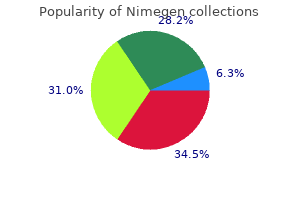
As a result, the traditional admonition to surgically explore all cysts in children has been replaced by a policy of radiographic evaluation similar to that in adults. Mumps (Epidemic Parotitis) Mumps is an acute viral illness that preferentially involves glandular and neural tissues. The peripheral blood smear shows hypochromia; microcytosis; target cells; basophilic stippling. A defect in any of these substrate-enhancing processes or in the hormones that regulate them may, therefore, cause hypoglycemia. Moderate to severe papulopustular acne warrants the use of oral antibiotics in combination with topical agents. This also creates an opportunity to discuss normal anatomy and behaviors, including masturbation; to distinguish acceptable from unacceptable (exploitative or abusive) forms of touching; and to help overcome the reluctance of some parents and children to express concerns about the genitalia. Trauma Acute trauma to the nail bed may cause subungual hemorrhage, resulting in a brow-black discoloration. Aspiration of the site of maximal involvement as revealed by imaging provides material for Gram stain and culture. Hand and Finger Fractures Although a complete discussion of the examination of the hand and hand injuries is beyond the scope of this chapter, several key points bear emphasis, because appropriate assessment and management are essential if long-term dysfunction is to be prevented. Special aspects of the history and physical assessment of dental and orofacial trauma are detailed in the Trauma to the Dentition section, later in this chapter. Surgical resection may be necessary in centrally located abscess that are resistant to medical therapy, as well as with fungal isolates and abscesses in immunocompromised patients. This breast development may be asynchronous with one breast bud becoming apparent several months ahead of the opposite side. Infrequent hypersensitivity reactions include pneumonitis, pancreatitis, hepatitis, and nephritis. Much of the remainder of the neurologic examination also lends itself to play, and in the second stage of observation a more detailed assessment of mental status, language, handedness, and fine and gross motor skills is performed by engaging the child in play. Routine use of prophylactic antibiotics is not recommended in the absence of systemic infection (Am J Gastroenterol 2013;108:1400). The pads of the fingertips and palms may be involved as well, although less severely. These sexually transmitted viral warts (A) tend to be discrete early on but with evolution become confluent (B). Some cases are characterized by patches of heaped-up scale in association with small pustules. C and D, the exanthem of coxsackievirus hand-foot-and-mouth disease involves the palmar, plantar, and interdigital surfaces of the hands and feet and sometimes the buttocks (E). The likelihood of scarring depends on the size and duration of the original lesions. The finger was swollen and painful and maximally tender at the base of the distal phalanx, and the patient was unable to extend the distal interphalangeal joint. Optic atrophy may occur as a sequela of papilledema, optic neuritis, compressive lesions of the optic nerve or chiasm, tumors Orbit Clinical signs of orbital disease include proptosis, restriction in ocular motility, compression of the optic nerve producing optic disc swelling, changes in refraction, and retinal striae. Erupted supernumerary tooth lingual to the maxillary central incisor in the deciduous dentition. For evaluation of swallowing, a barium contrast swallowing study using different consistencies of barium (thin liquid, paste, solid) can determine what consistency of food can be given safely to the patient. A, the relationship between the ear canal and eardrum is different in the infant, with the drum being tilted at an angle of 130 degrees. These patients usually support the affected arm with the opposite hand, with the shoulder in moderate internal rotation. Other common clinical features include mild femoral bowing at birth and generalized ligamentous laxity with joint hypermobility.
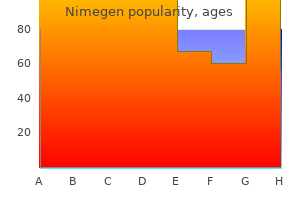
In children, it is valuable to present the object to the "normal eye" first with the question, "If this is $1 of red, how much red is it now A similar comparison may be performed for brightness by shining a light first into one eye and then into the other. After primary infection, a persistent subclinical infection is established in the lumbosacral ganglia. Similarly, psoriasis may affect the nails in a number of ways that help to distinguish it from other scaling disorders. Often, pes cavus or hammer-toe deformities develop in early childhood long before more overt symptoms appear. If the infant is in stable condition (particularly when the lesion is unilateral or moderate in degree with good renal function), radionuclide evaluation should be delayed for 4 to 6 weeks or longer to allow improved glomerular filtration, making studies more accurate. The navicular bone is in a medially displaced position on the head or neck of the talus, producing the characteristic adductus deformity of the forefoot. A family history of urinary infection, hydronephrosis, vesicoureteric reflux, cystic kidney disease, compromised fertility, or genital malformation may indicate the presence of heritable urinary anomaly. Androgen action is essential for retention of wolffian duct derivatives, development of the prostate, and differentiation of male external genitalia. Perforations Perforations are small, deep wounds caused by sharp objects and are fairly common in children, especially as a result of falls with such an object in the mouth. Compared to adolescents and adults, neonates and younger children have a greater proportion of total body water, and interstitial volume can double or triple in nephrotic syndrome. Therefore patients of sex partners known to have gonorrhea, Chlamydia, or nonspecific urethritis should be evaluated and treated appropriately. In liver transplantation, the risk of recurrent hepatitis B virus infection can be reduced by the administration of hepatitis B immunoglobulin during and after transplantation. One percent silver nitrate solution may cause a mild chemical conjunctivitis that spontaneously resolves within 1 or 2 days. Atelectasis, pleural effusion, pneumonia, and acute respiratory distress syndrome can develop in severely ill patients (see Chapter 10, Pulmonary Diseases). These have a predilection for the extensor surfaces of the extremities, the scalp, and the buttocks. Stage V: Hair is adult in quantity and type and appears in an inverse triangle of the classically feminine type. Patients in this age group (older than 6 years old) can perform pulmonary function tests, including bronchodilator responsiveness or bronchial provocation studies, to confirm the diagnosis. A hallmark of Apert syndrome is complex symmetric syndactyly of the hands and feet, especially of the middle three digits, leaving the first and fifth digits separate; this results in a "mitten hand" appearance. In the case of mechanical malalignment, tenderness may be greatest on palpation of the lateral or medial edge of the patella near the facets. Alterations in hormone balance result in distinct phenotypes affecting linear growth, timing of puberty, and body composition. Bone Marrow Failure Pancytopenia refers to a reduction in all three formed elements of the blood. Once these simple measures are undertaken, biochemical techniques are used to investigate renal function and hyperexcretion of metabolites resulting in nephrolithiasis, hemoglobinopathies, or bleeding diathesis, or to perform immunologic assessment of an underlying glomerulonephritis. Patients who have a known underlying disorder and infantile spasms have a higher incidence of developmental impairment than those of unknown cause. Predisposing factors, common complaints, and clinical features are listed in Table 19. Primary adrenal insufficiency is characterized by glucocorticoid and mineralocorticoid deficiencies. Yellow serous or feculent brown drainage from an apparent umbilical granuloma should raise concerns for a patent urachus or persistence of an omphalomesenteric duct sinus. Murray P rimary care providers frequently encounter children and adolescents with gynecologic concerns, such as prepubertal vulvovaginitis, vaginal discharge, and menstrual disorders, as well as other less common diagnoses. Optimal hearing and speech acquisition evolve when palatal integrity is restored before the second birthday. This condition represents a spectrum of sternal and midchest anomalies that may give rise to this malformation.
Mediterranean Oregano (Oregano). Nimegen.
Source: http://www.rxlist.com/script/main/art.asp?articlekey=96635
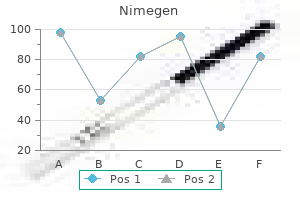
It is important to know, however, that children with constitutional delay typically have a period of decreased linear growth within the first 3 years of life. Rarely, infection is extensive and takes the form of a necrotizing fasciitis (see later). Because of the numerous agents that can produce lymphadenitis, meticulous care must be taken during the clinical assessment. The retinal lesions are frequently asymptomatic and are found incidentally as inactive pigmented chorioretinal scars. Lesions may consist of tender erythematous, subcutaneous nodules; erythematous macules and papules; or petechiae, occurring singly or in combination. Usually the patient is asymptomatic if the optic disc and macula are not involved. The thyroid gland synthesizes thyroxine (T4) and triiodothyronine (T3); this process is dependent on the availability of iodine. The lesions of fibromuscular dysplasia involve multiple areas of stenosis alternating with aneurysmal dilation in the distal two-thirds of the main renal artery. In the first subgroup, genital involvement is secondary to a systemic infection or the result of transfer of the pathogen from another primary site (such as the skin) or the respiratory, gastrointestinal, or urinary tract via contaminated fingers or proximity (see Box 19. Antibiotic treatment is frequently sufficient to eradicate the symptoms and discharge. Most often, the enlargement is modest and, if biopsied, nonspecific hyperplasia is found. Epispadias Epispadias represents the less severe end of the spectrum of exstrophic anomalies and has a spectrum of severity. The facial lesions begin to fade on the next day, and a symmetrical, macular or slightly raised, lacy, erythematous rash appears on the extensor surfaces of the extremities. It is most frequently associated with sickle cell disease but may be seen in relation to pelvic malignancy, leukemia, blunt perineal trauma, or secondary to acute spinal cord injury. Complications Complications of cystic fibrosis include hypochloremic metabolic alkalosis, hemoptysis, pneumothorax, pneumomediastinum, hypertrophic pulmonary osteoarthropathy, distal intestinal obstructive syndrome, biliary cirrhosis, pancreatitis, cor pulmonale, and respiratory failure. If not tearing excessively or a cosmetic issue, they do not require surgical excision. C, On otoscopy, erythema and edema of the canal wall are evident and the posterosuperior portion of the canal wall sags inferiorly. Infants with hypopituitarism may present in the early neonatal period with hypoglycemia or prolonged jaundice. Viral conjunctivitis is self-limited and usually resolves in 7 to 10 days depending on the viral strain. The first step, 25-hydroxylation, occurs in the liver to generate 25-hydroxyvitamin D. Spontaneous resolution occurs over the course of several weeks, and parents should be advised of the prolonged course and the appearance of the blood spreading or moving downward and turning yellow as it is gradually reabsorbed. A painful papule appears at the site of inoculation with subsequent axillary, epitrochlear, or inguinal adenitis. Anterior (C), lateral (D), and vertex (E) views of the craniofacial skeleton of a child with sagittal synostosis. Rumination, not typically considered reflux, is the voluntary contraction of abdominal musculature that leads to episodes that manifest similar to reflux. Neuroblastoma requires multimodal treatment, and the care team should include oncologists, pathologists, radiologists, as well as surgeons. Affected patients have onset before 5 years old and recurring episodes with a distinct periodicity in both duration of symptoms and asymptomatic interval for each given patient. The macula is a common site for exudate to collect; and when this is present, visual loss is profound. Priapism is a rare complication of chronic myelogenous leukemia, resulting from sludging and mechanical obstruction due to leukemia cells and/or coagulation within the corpora cavernosa. As a result, serious internal injuries of the vagina, rectum, urethra, bladder, and peritoneal structures may underlie deceptively mild external abnormalities, as described later. Some states have legislation in place that requires that vision screenings be performed prior to entry into school or in school at 1- to 2-year intervals. Heterochromia may also occur secondary to inflammation or after intraocular surgery or ocular trauma. The fixation reflex is used to assess vision in young infants or uncooperative patients.
More rarely, a direct blow to the posterior aspect of the distal humerus is the cause, in which case the distal fragment is angulated anteriorly. This infant with markedly elevated immunoglobulin E (IgE) experienced early onset of a pruritic dermatitis that shared clinical features with both seborrhea and atopic dermatitis. In addition, when growth halts after puberty, it is difficult to distinguish radiographically between the types of skeletal dysplasias, making it important to make a diagnosis as early as possible. Seborrhea Seborrheic dermatitis is characterized by erythema and scaling predominantly on hair-bearing and intertriginous areas, such as the scalp; eyebrows; eyelashes; perinasal, presternal, and, postauricular areas; and the neck, axillae, and groin. A role for neurologic dysfunction is suggested by the increased incidence and severity in neurologically impaired individuals. With the current sensitivity and specificity of current serological screening, this presentation has become less common. Telogen effluvium is one form of partial, temporary alopecia, which may occur 3 months after an emotional or physical stress, such as a severe illness, major surgery, or high fever. D, Lyme arthritis is noted in this boy with late onset Lyme disease with a large swollen knee joint without erythema. The presence of this condition requires aggressive antibiotic therapy, warm compresses, and occasionally incision and drainage of pus. C, Moon facies, clearly demonstrated, should raise the diagnostic index of Cushing syndrome. Cough occurring with wheezing suggests asthma; and if evidence of rhinitis, conjunctivitis, or "allergic shiners" is present, allergic disease may also be a consideration (see Chapter 4). Ptosis, or blepharoptosis, is a unilateral or bilateral decrease in the vertical distance between the upper and lower eyelids (palpebral fissure) because of dysfunction of the levator muscle. Before birth, myelination of the optic nerve begins in the central nervous system, progresses peripherally, and usually stops at the optic disc before birth. Contrast studies of the distal small bowel (enteroclysis) or colon (barium enema) are of marginal diagnostic utility in this setting and may obscure the scan. Clinical deterioration/lack of improvement despite 7-10 days of intensive medical management, evidence of bowel perforation, and peritoneal signs are indications for urgent total colectomy. It can be caused by chronic inflammation of the eyelids, entropion (inturning of the eyelid), eyelid trauma, or inflammatory conditions with scarring of the conjunctiva, such as Stevens-Johnson syndrome. Barium videofluoroscopy (modified barium swallow) evaluates the oropharyngeal swallow mechanism and may identify laryngeal penetration. Ludwig Angina Ludwig angina is a potentially life-threatening infection of the mandibular floor. In this section, only a few syndromes are considered in which renal abnormalities are serious, relatively common, and easily diagnosed on the basis of the physical findings. Treatment usually occurs before 12 months old, while the skull is relatively malleable and the dura can stimulate osteogenesis. The rapid proliferation phase initiates at 1 to 4 weeks old in the superficial and mixed type, whereas deep type starts around 2 to 3 months old. The knee is otherwise normal on examination, with the possible exception of mild limitation of flexion. This is the result of repetitive pulling and/or twisting of the hair, which fractures the longer shafts. For infections refractory to azoles, a short course of parenteral amphotericin B (0. The classical appearance is of a solitary plaque-like lesion with violaceous appearance. During this time, there is a 20-50% chance of spontaneous resolution of infection (Am J Gastroenterol 2008;103:1283). Pityriasis alba is best treated with a combination of bland emollients, sunblock to avoid increasing the contrast with normal skin, and in more severe cases topical immunomodulators. Corneal edema may produce an irregular corneal light reflex or dull the red reflex. Vaginal bleeding or spotting in early pregnancy may falsely reassure a young woman that she is not pregnant, and minimal weight gain (whether voluntary or involuntary) may further facilitate denial. It is a blotchy, erythematous, blanching, maculopapular eruption that appears at the hairline and spreads cephalocaudally over 3 days, ultimately involving the palms and soles.
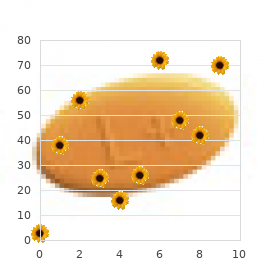
The success rate of air enema reduction has been reported to be as high as 94% but is very operator dependent and must be performed by an experienced radiologist. This spot is the mite, and it can be lifted out of the burrow with a needle or the point of a scalpel blade. Many drugs can affect platelet function temporarily and make tests of platelet function abnormal. Eyes with unsteady or wandering fixation usually have visual acuity decreased to the 20/800 level. Parents of children with eczema who themselves have recurrent herpes simplex lesions should be taught hygienic techniques that reduce the risk of transmitting the virus, even when asymptomatic, because shedding can still occur to their children. Characteristic telangiectases in the bulbar conjunctiva usually develop between 3 months and 6 years old. Pain on motion and limitation of motion signal the need for careful scrutiny as well. Moist papules, called condylomata lata, are found in the genital folds, gluteal cleft, and over the medial surfaces of the upper thighs. Postural kyphosis is usually seen in preadolescents and consists of a flexible thoracic kyphosis that is correctable on hyperextension. Laboratory evaluation should include a white blood cell count, urinalysis, and a pregnancy test in sexually mature girls. On resolution of active lesions, the involved area is characterized by confluent, white, atrophic patches with a shiny surface. A yellow color can be imparted to the sputum by breakdown products of white blood cells; therefore, yellow sputum can be seen with bacterial infection or asthma. The finding of a fat pad indicates the presence of a hemarthrosis, and it can be seen in patients with fractures involving the distal humerus, proximal radius, or proximal ulna. Lesions are intensely pruritic, fairly well-circumscribed, round to oval, red, scaly patches studded with 1- to 3-mm vesicles. During resolution, lesions tend to form a central crust with a surrounding collarette of scale, and ultimately (after 4 to 6 weeks) the child is left with target-shaped macules that are hyperpigmented peripherally and hypopigmented centrally. Other extrahepatic causes of jaundice in childhood include congenital choledochal cysts, which are surgically correctable and often diagnosed by ultrasound. Cigarette smoking in this age group should also be a consideration, and, unless the rapport between physician and adolescent is particularly strong, the history will likely be unrevealing. Inspection disclosed a hematoma of the anterior portion of the right labia majora, contusions of the clitoris and anterior labia minora, and a hematoma protruding through the vaginal opening. Parameter,Age Calcium <12monthsold 1to3yearsold 1to5yearsold 5to7yearsold >7yearsold Oxalate 0to6monthsold 7to24monthsold 2to5yearsold 5to14yearsold >16yearsold Uricacid <45mg/1. This impetiginous lesion has evolved from a papule to a vesicle that ruptured, producing the characteristic honeycolored crust. Although many occur at times of active disease, they may also occur at any time or be the presenting symptom of the disease. A, this adolescent boy had adenoma sebaceum in a characteristic malar distribution and chin lesions as well. This includes checking the integrity of pulses and speed of capillary refill, as well as testing sensory and motor function. In young children, nonpruritic angioedema of the face, scalp, sacral area, and/or scrotum. B and C, this boy had massive enlargement of the tonsillar node with overlying edema and mild erythema. Several syndromes are associated with epidermal nevi in conjunction with other systemic findings. Associations with demyelinating disease occur but are less frequent than seen in adults. They may be small or large, are usually painless even if they are large, and they may be tense enough to obscure palpation of the testis.
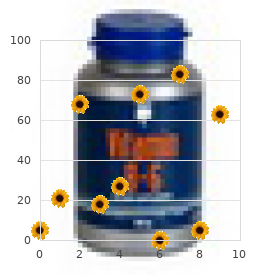
On the other hand, the lower extremity has thin soft tissue relative to the bone and overall a paucity of soft tissue, so local flaps are often not an option. The organisms disseminate through the airways to the rest of the lung, setting up new foci of infection. Acute, recurrent, chorioretinal inflammation may occur adjacent to pigmented scars. Whereas primary dysmotility syndromes (such as, chronic intestinal pseudoobstruction) may broadly fit this diagnosis, functional gastrointestinal disorders are commonly thought of as symptoms of pain in conjunction with normal motility. Secondary neurologic problems are rare, but accelerated degenerative changes may occur at mobile spinal segments adjacent to the involved vertebrae. Albinism Albinism refers to conditions involving deficiencies of melanin in the skin or eye. The differential diagnosis of childhood melanoma includes benign congenital and acquired nevi; the blue nevus, a small, firm, blue papule consisting of deep nevus cells. B, Another child has a unilateral geometric patch of hair loss, again with short broken hairs. Increased kyphosis, especially in the thoracic region, may be detected when viewing the patient from the side. Before the institution of aggressive insulin therapy, children with diabetes mellitus and short stature were seen frequently in endocrine clinics and represented instances of Mauriac syndrome. Mild, fully compensated hemolytic anemia, as well as severe neonatal hemolysis and hyperbilirubinemia, may occur. C, Longitudinal shortening of the thigh in a child with a proximal femur fracture. When lesions form on a digit, lichen striatus can lead to a temporary linear nail dystrophy. Gingival hyperplasia may also be idiopathic or genetically transmitted as in familial fibromatosis. Pain secondary to varicocele is uncommon, but a dull aching may occur in large varicoceles. Differential Diagnosis Differential diagnosis varies with duration after transplantation (Table 17-1). The involved regional node is firm and tender and may be associated with overlying erythema. C, this 1-year-old female presented with 4 days of fever and lack of right arm use. Overall, the upper third grows fastest because of the development of the brain and orbits, the middle third is next, and the lower third, or mandible, is the last to finish growing after puberty. It has been found in the vaginal discharge of neonates delivered of mothers infected at the time of delivery, but thereafter it tends to be an unusual finding until the peripubertal period. Liberal use of topical emollients usually keeps pruritus and scaling under control. In a patient experiencing an acute exacerbation of asthma, the lungs have wheezes in a range of pitches (described as polyphonic) with substantial regional differences in auscultation. The phenomenon is the result of invasion of lymphatic vessels by pathogenic organisms, which then spread along these channels toward regional lymph nodes. An immunologic etiology is suggested by the chronic elevation of immunoglobulin E (IgE) seen in a majority of patients. Other causes for ptosis include ocular inflammation, chronic irritation of the anterior segment of the eye, chronic use of topical steroid eye drops, third nerve palsy, and trauma. This anteroposterior radiograph of the elbow shows a fracture of the lateral condyle of the distal humerus. Other symptoms may include anorexia, avoidance of certain foods, halitosis, toothache, a sensitive tooth, or facial swelling. However, only preliminary results on small numbers of patients are available, and data on long-term side effects do not exist. This may occur as the result of laterally directed shearing forces or of a hyperextension injury. During this vulnerable period, anatomic interference (malposition of the tongue due to mandibular hypoplasia, as in Pierre Robin sequence), miscues in cell differentiation and migration, or teratogens (phenytoin, retinoids, steroids, lithium, and maternal smoking) may lead to clefting in the developing fetus.
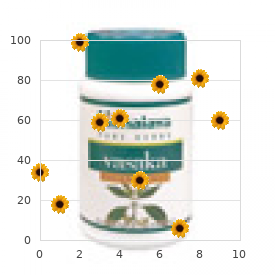
Further, patients should be treated with antiviral agents at the first sign of infection with herpes simplex. If intracranial pressure is normalized, it may take 6 weeks for papilledema to resolve and the optic disc to normalize. Later in childhood, abscessed maxillary teeth may intermittently decompress through the floor of a maxillary sinus, producing recurrent sinus infections. Less frequently, it may be seen in immunocompromised or immunosuppressed children or in those with serious underlying systemic diseases. They tend to be oval, pinkish red, and distributed predominantly over the back, buttocks, posterior thighs, and soles. Preauricular sinuses and cysts constitute two of the more common congenital abnormalities. Although trichotillomania may occur in children with severe psychiatric disease, most cases are associated with situational stress or anxiety. Lesions on the head and neck re-pigment faster, because repigmentation occurs first through hair follicles and these areas have more numerous populations of hair follicles. Before the blistering phase ends, the second phase, marked by development of irregular, warty papules, supervenes. Secondary Syphilis In the absence of early diagnosis and treatment, hematogenous spread occurs approximately 1 to 3 months after the appearance of the primary chancre, whereupon the lesions of secondary syphilis appear. Most commonly, it occurs at the onset of puberty in obese children with delayed sexual maturation. Clinical symptoms of hydrocephalus and foramen magnum stenosis include brisk reflexes, numbness, weakness, difficulty walking, loss of bowel and bladder control, and central sleep apnea. Sudden enlargement with proptosis may occur after hemorrhage within an orbital lesion. Other findings include isolated metaphyseal radiolucency surrounded by reactive bone (Brodie abscess); metaphyseal radiolucency with loss or disruption of cortical bone simulating a tumor; excessive cortical reaction in the diaphysis simulating osteoid osteoma; or multiple layers of subperiosteal new bone, at times mimicking the appearance of Ewing sarcoma. Depending on the time of presentation, degree of displacement, and severity of soft tissue swelling, reduction or casting may have to be deferred pending application of traction and subsidence of edema. A dislocated lens, called ectopia lentis, may cause a profound decrease in vision by producing a large refractive error and amblyopia. Tubulointerstitial Disease Reflux nephropathy Tubulointerstitial nephritis Cystinosis Lowe syndrome Drugs and heavy metals Ischemic tubular injury Renal hypodysplasia forgoing biochemical, immunologic, imaging and renal biopsy evaluation, which may be needed to exclude other potentially serious renal disorders leading to proteinuria (Box 14. Attention should be paid to the Tanner staging of genital and pubic hair development, especially for the child with "off-time" puberty. Other neck masses including branchial cyst, thyroglossal cyst, and intrathyroid thymic tissue are also more common in the pediatric population than in adults. Other common manifestations of disseminated disease include aseptic meningitis, sometimes accompanied by focal neurologic signs and symptoms, and unilateral or bilateral facial nerve palsy. Other clinical features include ligamentous laxity (seen in 50%) and early-onset hearing loss. Other Complications Obstructive sleep apnea is common in many skeletal dysplasias but especially achondroplasia. Internal Tibial Torsion Internal tibial torsion is a nonpathologic variation in the normal development of the lower leg in children younger than 5 years old. An eclipse phase of infection, during which no testing is positive, still exists for up to 7 days after exposure. In children, optic nerve gliomas are benign lesions that may, however, extend to the optic chiasm or intracranially. The major known function of prolactin in humans is the initiation and maintenance of lactation. Idiopathic Gingival Hyperplasia Different types of patients, often with significant systemic illnesses or syndromes, may manifest generalized gingival enlargements. Central, steady, maintained fixation equates to visual acuity of 20/200 or better. Rarely, the patient may undergo a surgical procedure for the rectal prolapse before the underlying diagnosis is suspected. A significant variation affecting a single tooth or only a few teeth should be carefully investigated as well. If the cover is removed and no eye movement occurs, this indicates that the eyes have equal visual acuity or fixation.